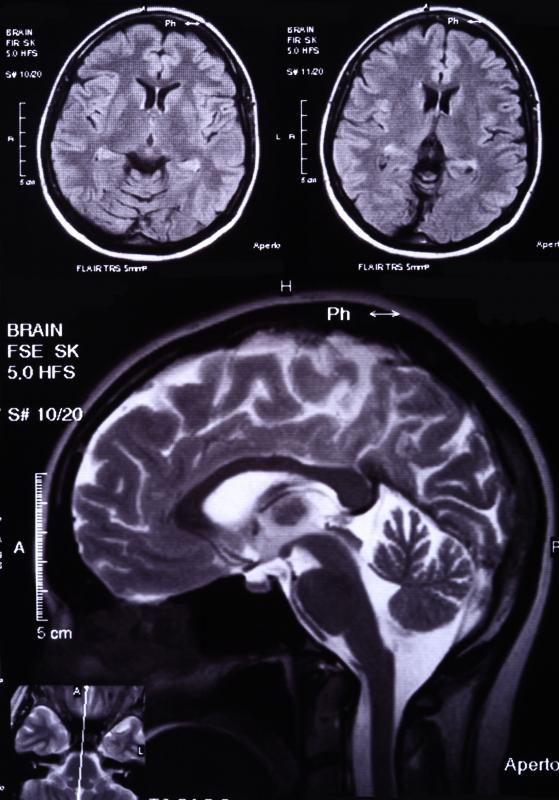At TheHealthBoard, we're committed to delivering accurate, trustworthy information. Our expert-authored content is rigorously fact-checked and sourced from credible authorities. Discover how we uphold the highest standards in providing you with reliable knowledge.
What Is the Difference between Graded Potential and Action Potential?
Both graded potential and action potential result from a depolarization in the resting potential of a plasma membrane. The strength of this depolarization marks the differences between graded potential and action potential. Graded potentials are the weaker of the two but have the ability to generate to action potentials.
A graded, or local, potential is a depolarization in the resting potential because of a stimulus that is applied to only one area of a plasma membrane. This change could be caused by molecules binding to receptors, a mechanical stimulation or a change in the charge, temperature or permeability of the membrane. The magnitude of the potential depends on the strength and frequency of the stimulus. These potentials can carry for only a short distance down the plasma membrane and get weaker the farther they travel.

If a membrane has already had one local stimulus applied and has not yet returned to its resting potential when another local stimulus is applied, these two stimuli can combine. This will create a greater potential that can travel farther down the membrane. As the graded potentials continue to grow stronger, they have the potential to depolarize the membrane past its threshold. After the threshold is reached, an action potential is generated.

The action potential is the result of a large depolarization of the membrane that causes it to reach the threshold. After this occurs, the action potential will be generated and can not be prevented; this is known as the all-or-none principle. Either there is enough depolarization to cause an action potential that will carry through all three phases, or there is not.
After the threshold is reached, the membrane goes through a phase of depolarization in which sodium ions are rapidly entering into the cell. This causes the charge to be more positive. In the second phase of repolarization, potassium ions flow rapidly out of the cell, counteracting the sodium ions and causing the membrane to move back toward its resting negative charge.
At this point, sodium ions are no longer entering the cell, but some potassium ions are still diffusing out. This causes the cell to have a more negative charge than before, which allows the cell to re-establish its resting potential before being sent into another action potential. During this period of afterpotential, it is possible for a stimulus to create an action potential, but because of the hyperpolarization, the stimulus would have to be much stronger than normal to do so.
Both graded potential and action potential are important to communication within the body. Action potentials are the way that the body sends information from one place to another. The synapses in the brain communicate with one another via action potentials. Messages from the brain to the muscles and other organs are sent along action potentials using neurotransmitters, as are messages from the organs back to the brain.
AS FEATURED ON:
AS FEATURED ON:












Discussion Comments
How do you get an action potential by applying a stronger negative stimulus?
Post your comments